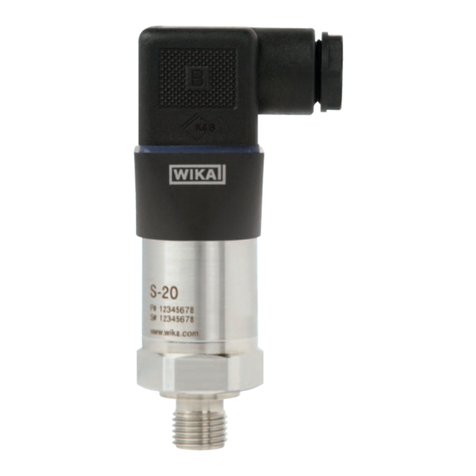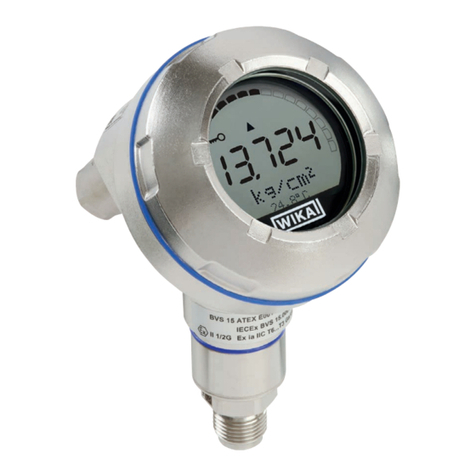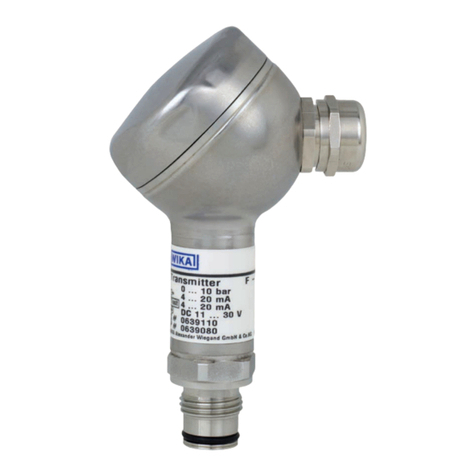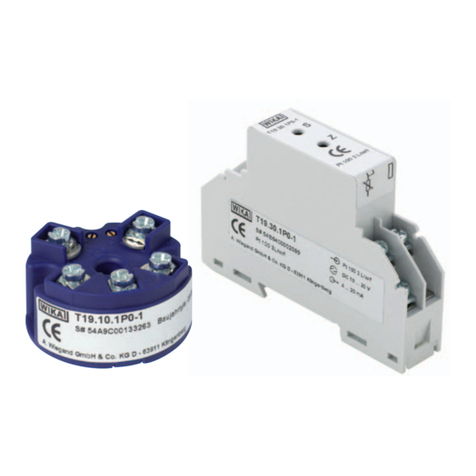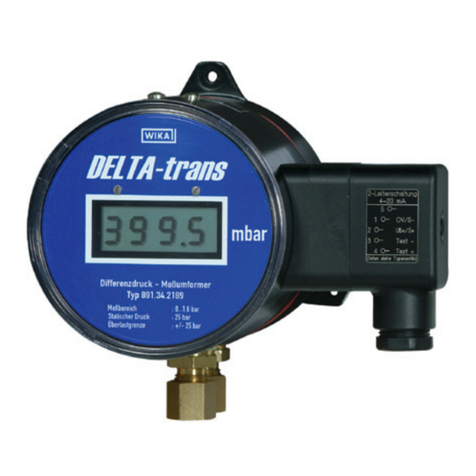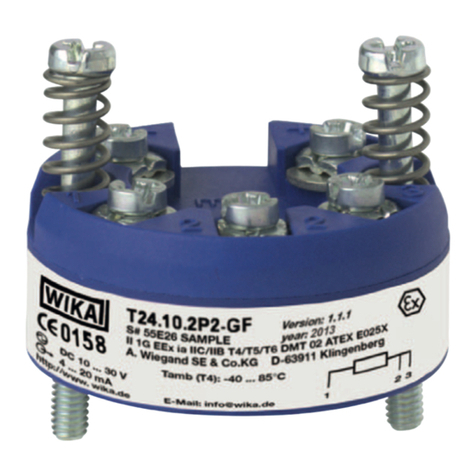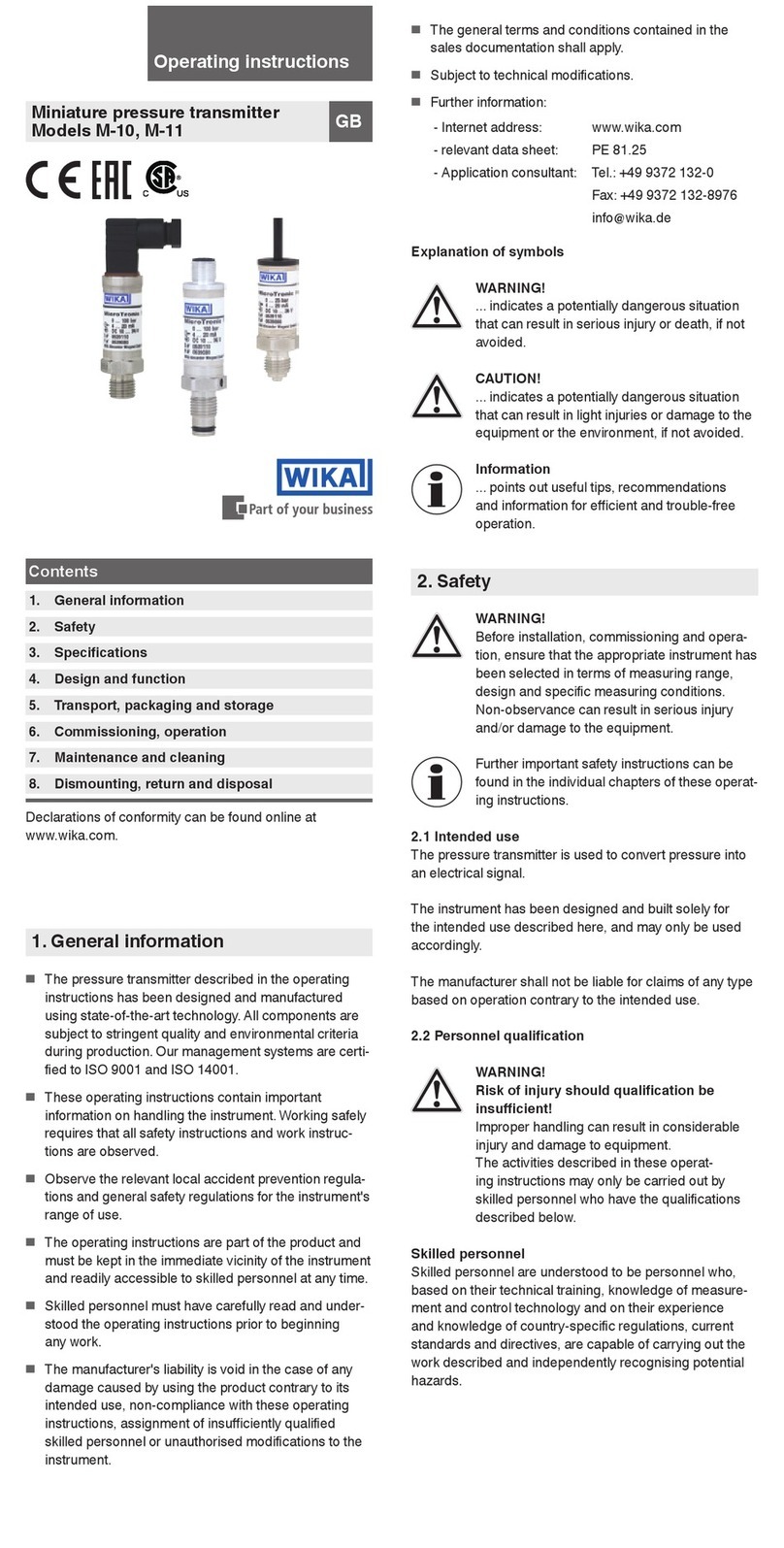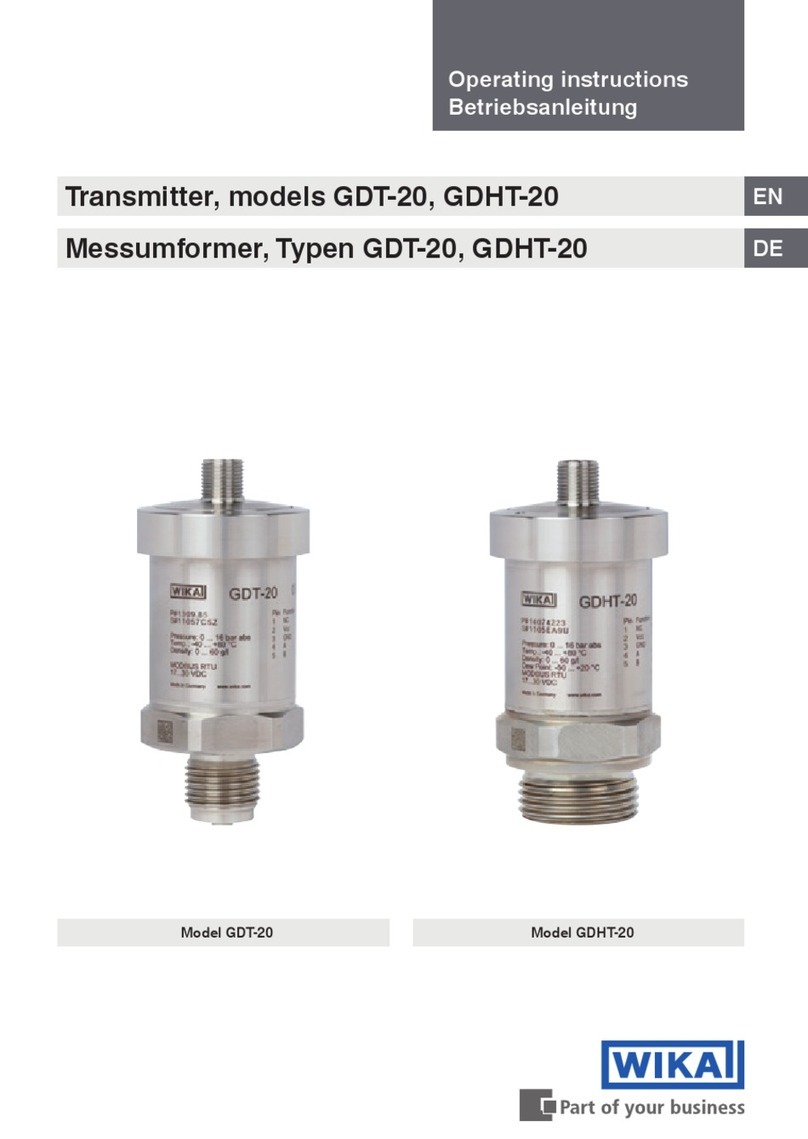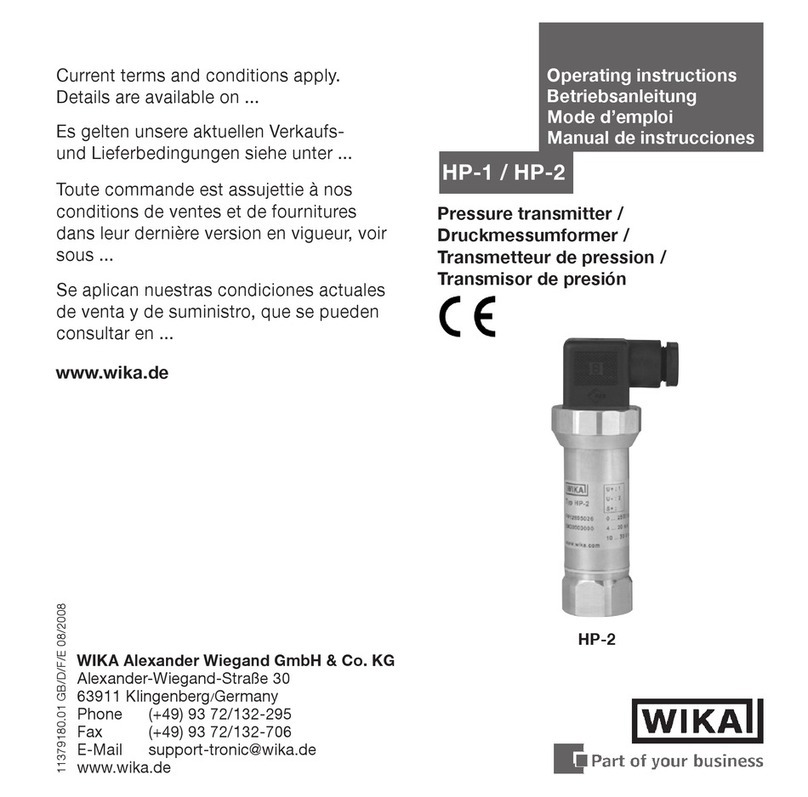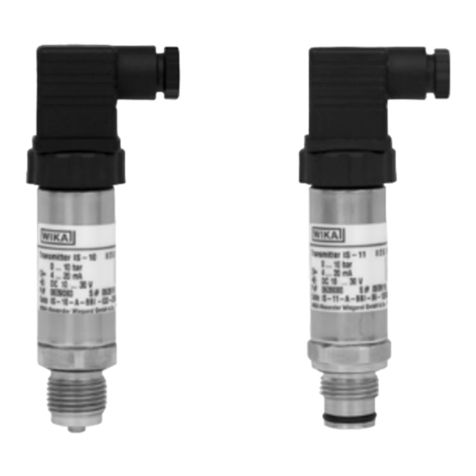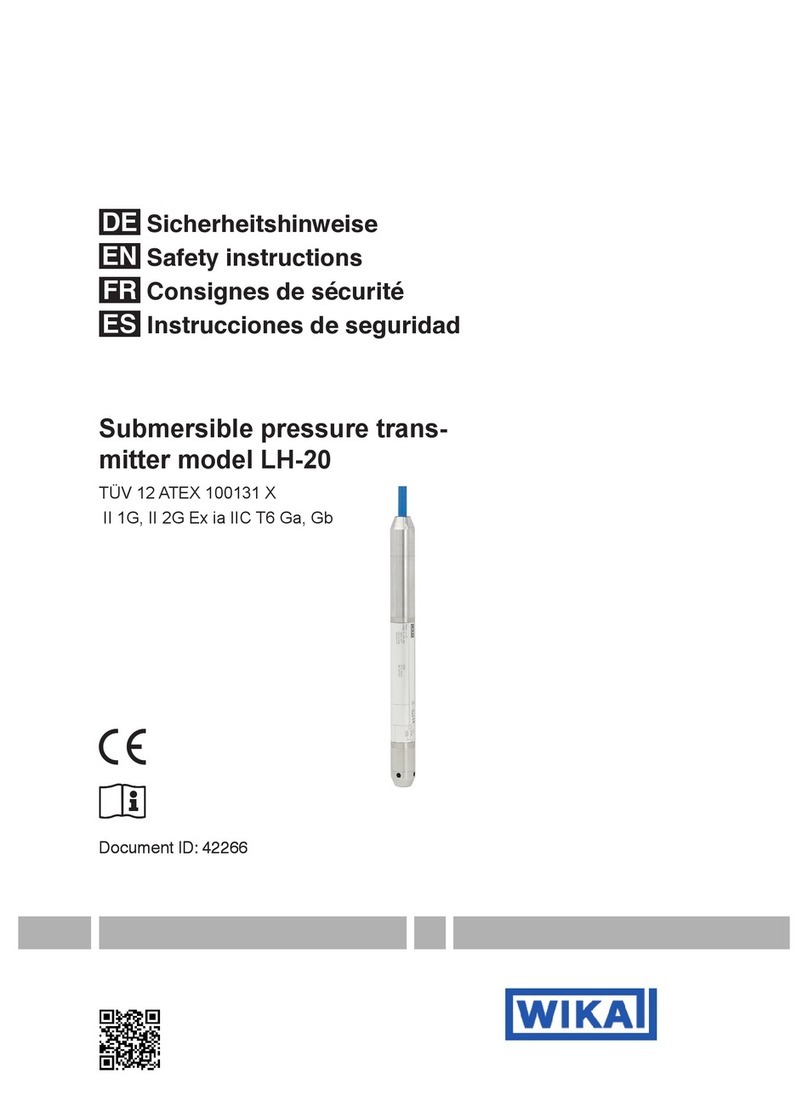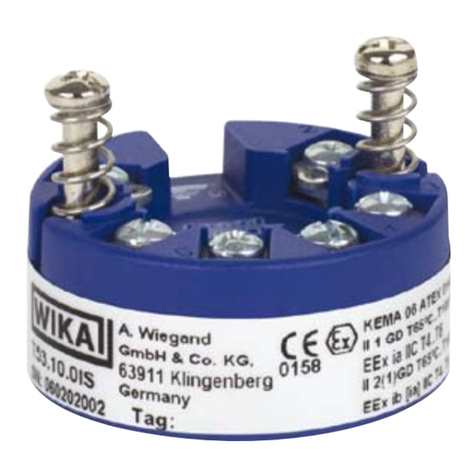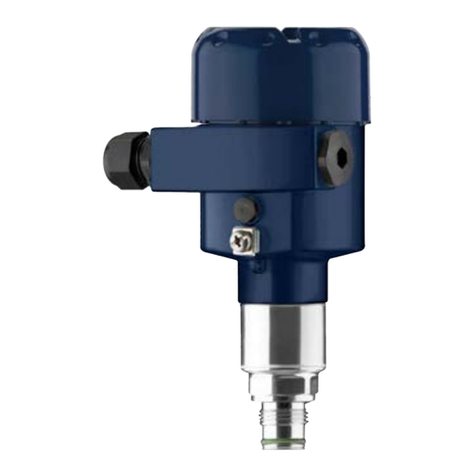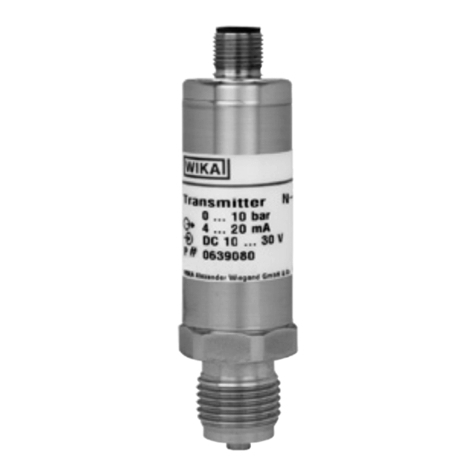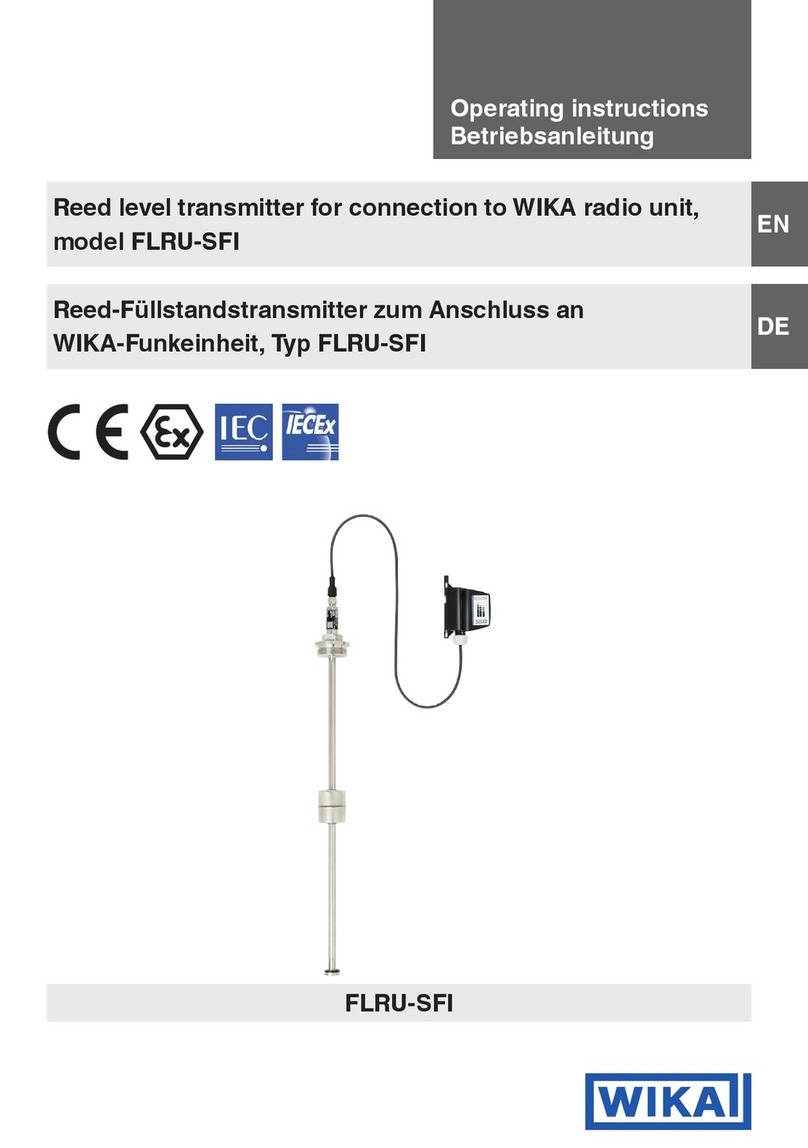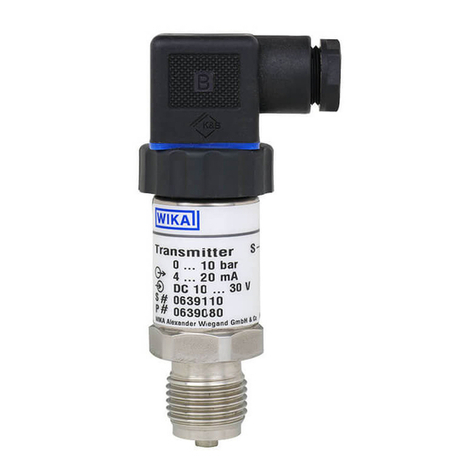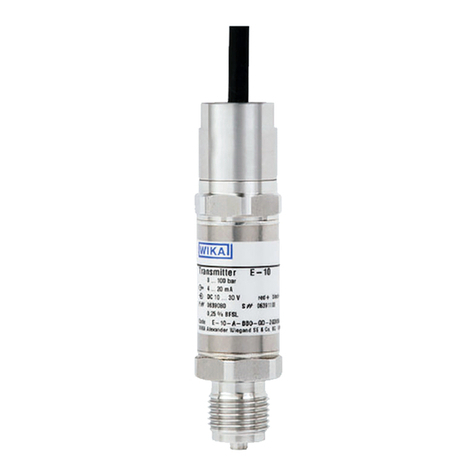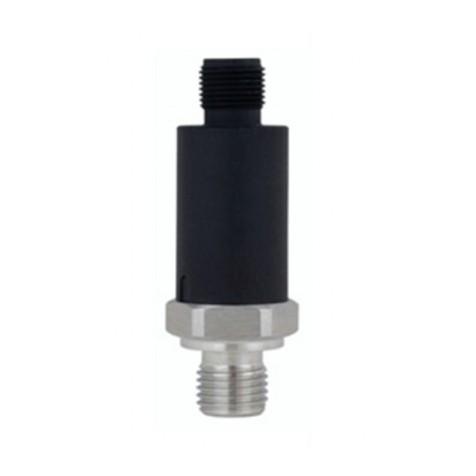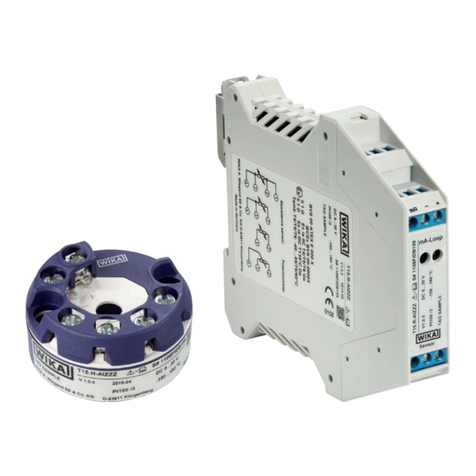
2
Contents
WIKA Operating Instructions - Process pressure transmitter CPT-2x
Contents
1 About this document ............................................................................................................... 4
1.1 Function ........................................................................................................................... 4
1.2 Target group ..................................................................................................................... 4
1.3 Symbols used................................................................................................................... 4
2 For your safety ......................................................................................................................... 5
2.1 Authorised personnel ....................................................................................................... 5
2.2 Appropriate use................................................................................................................ 5
2.3 Warning about incorrect use............................................................................................. 5
2.4 General safety instructions............................................................................................... 5
2.5 EU conformity................................................................................................................... 5
2.6 Installation and operation in the USA and Canada ........................................................... 6
3 Product description ................................................................................................................. 7
3.1 Conguration.................................................................................................................... 7
3.2 Principle of operation........................................................................................................ 8
3.3 Supplementary cleaning procedures.............................................................................. 13
3.4 Packaging, transport and storage................................................................................... 13
4 Mounting................................................................................................................................. 15
4.1 General instructions ....................................................................................................... 15
4.2 Instructions for oxygen applications ............................................................................... 17
4.3 Ventilation and pressure compensation.......................................................................... 17
4.4 Combination Master - Slave ........................................................................................... 19
4.5 Level measurement........................................................................................................ 20
4.6 Dierential pressure measurement ................................................................................ 21
4.7 Interface measurement .................................................................................................. 22
4.8 Density measurement .................................................................................................... 23
4.9 Density-compensated level measurement ..................................................................... 24
4.10 External housing ............................................................................................................ 26
5 Connecting to power supply................................................................................................. 27
5.1 Preparing the connection ............................................................................................... 27
5.2 Connecting..................................................................................................................... 28
5.3 Single chamber housing................................................................................................. 29
5.4 External housing with version IP68 (25 bar) ................................................................... 30
5.5 Connection example ...................................................................................................... 32
6 Set up with the display and adjustment module ................................................................ 33
6.1 Parameter adjustment - Extended adjustment................................................................ 33
7 Diagnosis, asset management and service ........................................................................ 46
7.1 Maintenance .................................................................................................................. 46
7.2 Cleaning - hygienic connection with compression nut .................................................... 46
7.3 Rectify faults................................................................................................................... 47
7.4 Exchange process module on version IP68 (25 bar) ...................................................... 47
7.5 Instrument repair ............................................................................................................ 48
8 Dismount................................................................................................................................. 49
8.1 Dismounting steps.......................................................................................................... 49
8.2 Disposal ......................................................................................................................... 49
9 Supplement ............................................................................................................................ 50







